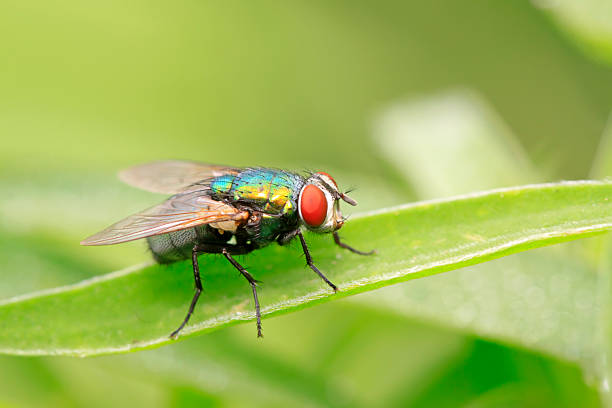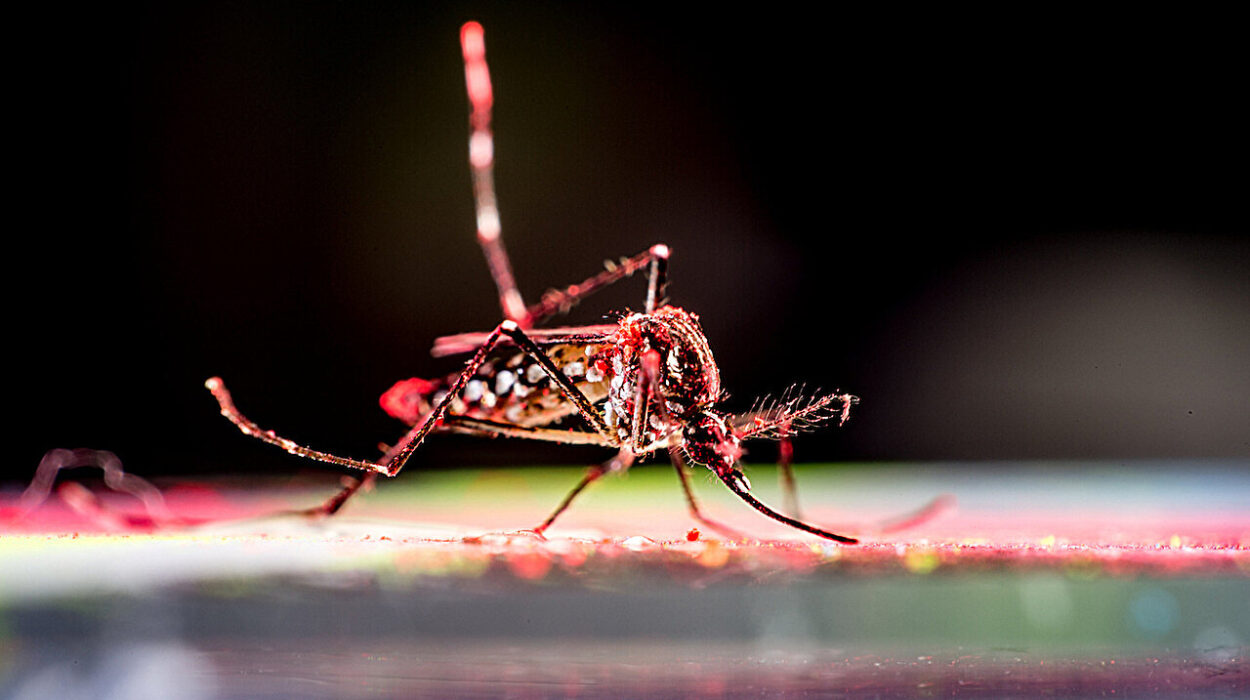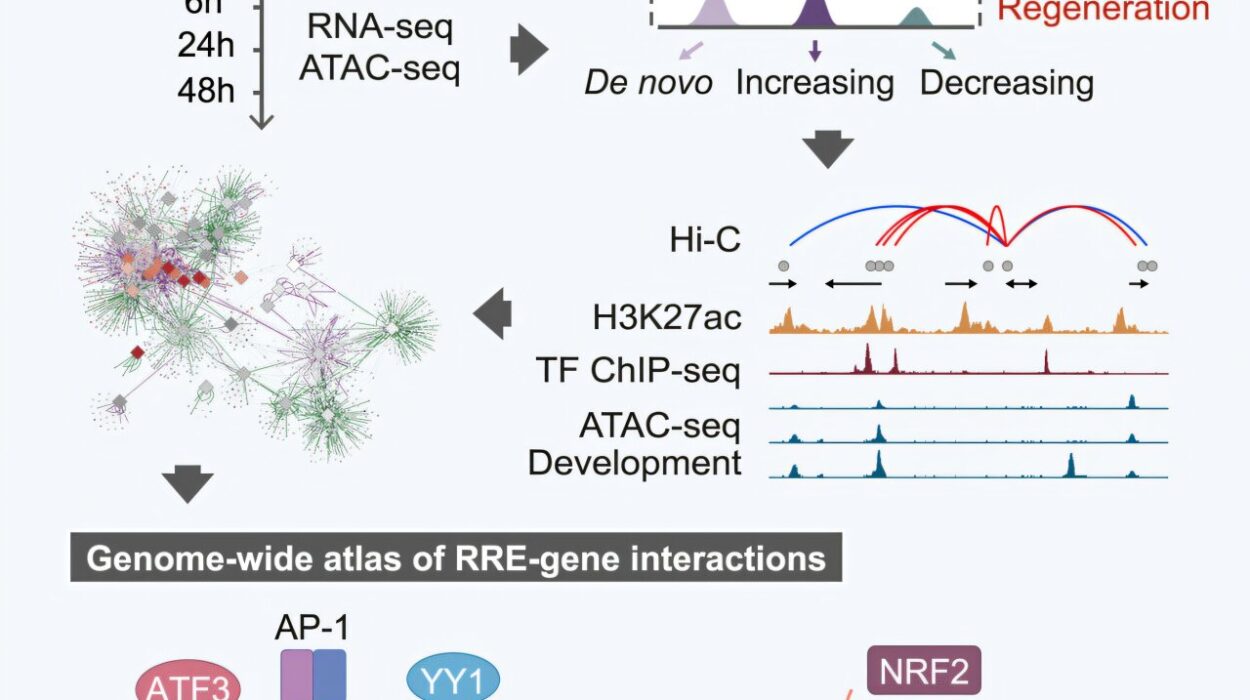In the quiet unfolding of a fly’s nervous system, long before it learns to flutter its wings or find a mate, a dramatic and deliberate sculpting takes place. Entire groups of neurons are born, stretch into form, and then, some of them, slip away forever. Their disappearance is not an accident. It is a choice written into the fly’s genes, a choice that shapes what the adult will become.
Researchers at King’s College London have now uncovered a crucial piece of this developmental drama: the precisely timed activity of two genes named grim and reaper. These genes, true to their names, decide which neurons live and which die within the developing nervous system of female flies. What makes the discovery even more striking is that the neurons grim and reaper eliminate in females survive in males, where they help produce the intricate courtship song that males perform in the hopes of wooing a mate.
In revealing how these genes choreograph cell death, the researchers have illuminated a deeper truth about how a nervous system is built—and how subtle differences in timing can define the behaviors of an adult organism.
The Puzzle of Making a Nervous System
To understand why the researchers’ discovery matters, it helps to appreciate the challenge the developing brain faces. Neurons are among the most specialized cells in the body. Some stretch extraordinary distances to connect the nervous system to faraway muscles. Others form dense, branching networks to communicate with nearby neighbors. And yet, the early nervous system overproduces them. More cells are born than the adult fly will ever need.
This excess is intentional. It gives the developing brain options, a surplus of potential that can be refined later. But refinement requires selective removal. Programmed cell death, or apoptosis, is the mechanism that prunes away unnecessary neurons so that the adult brain has exactly the right number, arranged in the right patterns.
Dr. Darren Williams of the Institute of Psychiatry, Psychology & Neuroscience (IoPPN) explains the process in imagery as vivid as it is precise: “Just as Michelangelo sculpted the statue of David from the gargantuan block of marble known as ‘the giant,’ the segmental and sex-specific circuits in the fly are carved piece by piece from developing neurons using programmed cell death. Despite decades of work on the molecules that execute programmed cell death, little is known about the mechanisms that control when and where it happens.”
That “when and where” is exactly what this new study set out to uncover.
Discovering the Genetic Sculptors
The research team focused on two genes—grim and reaper—already known to trigger cell death but not understood in terms of their developmental timing. Their new work, published in Development under the title “Hemilineage-specific deployment of the pro-apoptotic RHG genes reaper and grim during neurogenesis sculpts segment and sex-specific neural network composition in Drosophila,” reveals that grim and reaper act like tiny executioners with extraordinary precision.
They are turned on only in certain groups of neurons, only at specific times, and only in specific individuals. In female flies, they silence the neurons that would otherwise contribute to the male’s courtship song circuit. Their transcription is essentially a developmental switch, ensuring that females do not develop the same neural wiring that males rely on to sing.
“This work is one of the most exciting things to come out of our lab. The conceptual framework it forwards and its implications are startling. The work gives us an in-road into the logic of how lineages of neurons can be finely tuned during development and in evolution,” said Dr. Williams.
He emphasizes how overlooked this type of cell death has been. “Until now, this specific type of cell death has been largely ignored, even though it removes more than half of the neurons that are born in flies.”
Half of all neurons. Quietly erased, yet essential to building a functional adult.
Watching Neurons Live and Die in Real Time
To unravel the timing behind this deletion process, the researchers used fluorescent labels and new genetic tools that allowed them to watch neurons as they formed and, in some cases, vanished. They wanted to know whether the differences between male and female nervous systems were caused by specific gene expression events—and whether those events explained why certain neurons survived in one sex but died in the other.
Their observations revealed a remarkable pattern. During narrowly defined moments in development, female flies activate grim and reaper in a subset of neurons. Those neurons die. In males, the genes remain silent in those same cells, allowing them to survive and eventually support the courtship song.
The team then performed a crucial test. When they removed grim and reaper from developing female flies, the neurons survived. Females developed with the circuitry normally reserved for males. The death of these neurons, it became clear, was the deciding factor in shaping sex-specific neural architecture.
But the researchers did not stop there. They next artificially switched on a gene that causes flies to develop as females, but only within a small group of neurons in male flies. This small genetic nudge was enough to “turn up” the levels of grim and reaper expression and kill the same neurons that naturally die in females.
The implications were powerful. The sex-specific wiring of the nervous system comes down to small, carefully timed genetic decisions made moments after neurons are born.
“When we saw that differences between males and female nervous systems were regulated by this specific mode of death in neurons that were the recently born we realized just how critical type of death is for sculpting developing neural circuitry,” said Dr. Connor Sproston, the study’s first author.
A Global Collaboration Behind Tiny Cells
The project also grew through international collaboration. Work with researchers at the Tokyo University of Science and Technology brought new genetic tools to the study and strengthened its conclusions.
“Being able to collaborate with the Kondo Lab really elevated the work through the generation of powerful new genetic tools. Visiting Dr. Kondo in the summer of 2019 was a definite highlight of my time working on the project,” said Dr. Sproston.
From London to Tokyo, scientists joined forces to understand a process measured not in minutes or millimeters, but in the quiet, decisive choices of individual cells.
Why This Discovery Matters
This research uncovers a fundamental truth about how nervous systems are built: sometimes making the right brain means letting go of what you don’t need. The precisely timed activation of grim and reaper shows that cell death is not just a removal process but a shaping force, determining not only how many neurons survive but which behaviors an adult organism can perform.
In flies, these decisions mean the difference between silence and song. More broadly, they offer a new window into how complex nervous systems—across species—achieve their final architecture. By learning how developing brains make these choices, scientists gain deeper insight into the logic of neural development, the origins of behavioral differences, and the evolution of sex-specific circuits.
The story of grim and reaper is ultimately a story of elegance: a reminder that sometimes nature sculpts its masterpieces not by adding, but by letting certain pieces fall away, revealing the intricate forms beneath.
More information: Connor J. Sproston et al, Hemilineage-specific deployment of the pro-apoptotic RHG genes reaper and grim during neurogenesis sculpts segment and sex-specific neural network composition in Drosophila, Development (2025). DOI: 10.1242/dev.204902






